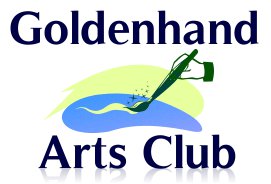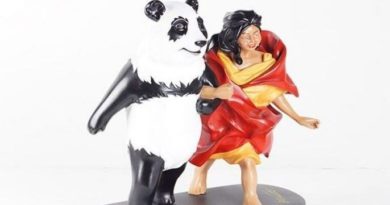ASEAN PAINTINGS: KUALA LUMPUR – Malaysia’s rubber paint a first in the world
An example of the natural rubber-based ‘Getah Colour’ paint that only takes a couple of minutes to dry for every drawing. – PHOTOS: BERNAMA
.
.
KUALA LUMPUR (Bernama) – When it comes to choosing painting media, we tend to think of watercolour, acrylic or oil paint.
Malaysia is now coming up with another painting medium called natural rubber-based paint, and it is a first in the world.
Named ‘Getah Colour’ (patent pending), the innovative product is by the Malaysian Rubber Board and set to become the world’s newest painting medium for visual arts.
High Potential
With 30 per cent of its composition comprising natural latex, natural rubber-based paint is more environmentally friendly when compared with acrylic paint, which is petroleum-based. Oil paint, meanwhile, could be a potential health hazard, said the Malaysian Rubber Board Director General Datuk Dr Zairossani Mohd Nor.
Although it might be slightly different from acrylic, watercolour or oil colour, natural rubber-based paint do come with several benefits that makes it ideal as a learning medium for school children and amateurs.


Among the advantages of rubber paint is that it dries faster compared with watercolour but slower than acrylic, which benefits even professional artists as it provides more room for flexibility and expression in their work.
“The rubber-based paint becomes waterproof when it dries and this helps the artwork to last longer. It is also easier to wash off the hands after use. “As a natural polymer, the natural rubber latex needs to be added with other ingredients in order to achieve a suitable viscosity to prevent it from coagulating while brushing,” he told Bernama when interviewed recently.
He acknowledged that it might take time for natural rubber-based paint to be accepted by professional artists worldwide, as was the case when acrylic was first introduced.
Historically, it was only slightly over fifty years ago that critiques began to recognise and accept acrylic as a painting medium, and Zairossani predicted that rubber paint would probably chart a similar course.
Expand the usage of natural latex
Programme head Dr Asrul Mustafa said the research into making natural rubber-based paint was part of an initiative to increase the use of the most advanced natural latex to produce high value products such as gloves.
The initial stage of the research was to expand on production in the construction industry and manufacture a paint for residential and industrial use.
“The research bore positive outcomes and so we decided to expand its usage for visual arts and artistic education, which has a wider potential,” he said.
This would ensure that natural latex retains its position as one of the national commodities necessary for the country’s growth and in the quest towards National Transformation 2050 (TN50), said Asrul.
He believed the innovation would inculcate interest not only in visual arts but in elastomeric science and technology as well.
Collaborating with the visual arts gallery
Asrul, who has been involved with the research from the beginning, said that it took them a number of prototypes to achieve the most optimal formula for the rubber-based paint.
Creating a paint or colouring medium requires three basic components – namely the pigment, the thickening agent and the binding agent.
The difference between natural rubber-based paint and acrylic paint was that the former uses natural latex as a binding agent while the latter uses petroleum, he said.
“Although this innovation is not exactly high-tech, in the long-term it can benefit us a lot, especially in ensuring the national commodity remains relevant until 2050,” he said.
The Malaysian Rubber Board is collaborating with local paint companies to produce the paint on a large scale and in accordance to the stipulated standards and specifications.
In addition to that, the board is also collaborating with the National Visual Arts Gallery on a two-week exhibition of artworks made using natural rubber-based paint in May this year.
It will feature 88 pieces from 17 artists, including two from Singapore and Myanmar.
“We are hoping that the exhibition will serve to promote the usage of rubber paint locally and internationally,” he said.
Unique characteristics
Ahmad Suhaime Nordin, a Malaysian Rubber Board in-house artist who has spent some time working with Getah Colour, said there were several key characteristics of rubber paint. One in particular was the glossy finish.
He believed that natural rubber paint, currently available in 12 colours, has characteristics absent in acrylic and oil paint.
“Although the colours produced are quite similar, usage techniques may differ.
“Acrylic has a transparent quality to it while rubber paint does not. We have to manipulate this quality to our advantage for the best results,” he said.
Ahmad Suhaime has produced more than 10 art pieces using natural rubber-based paint, some of which has already been sold.
“When I tell people that the medium used was made out of natural rubber, many became interested and want to learn more. From there, I can see that with the right promotion and enough exposure, there will be a huge market potential for rubber paint,” he said.
NOTE : All photographs, news, editorials, opinions, information, data, others have been taken from the Internet ..aseanews.net | [email protected] |
For comments, Email to :
Goldenhands Arts Club | [email protected]| Contributor










